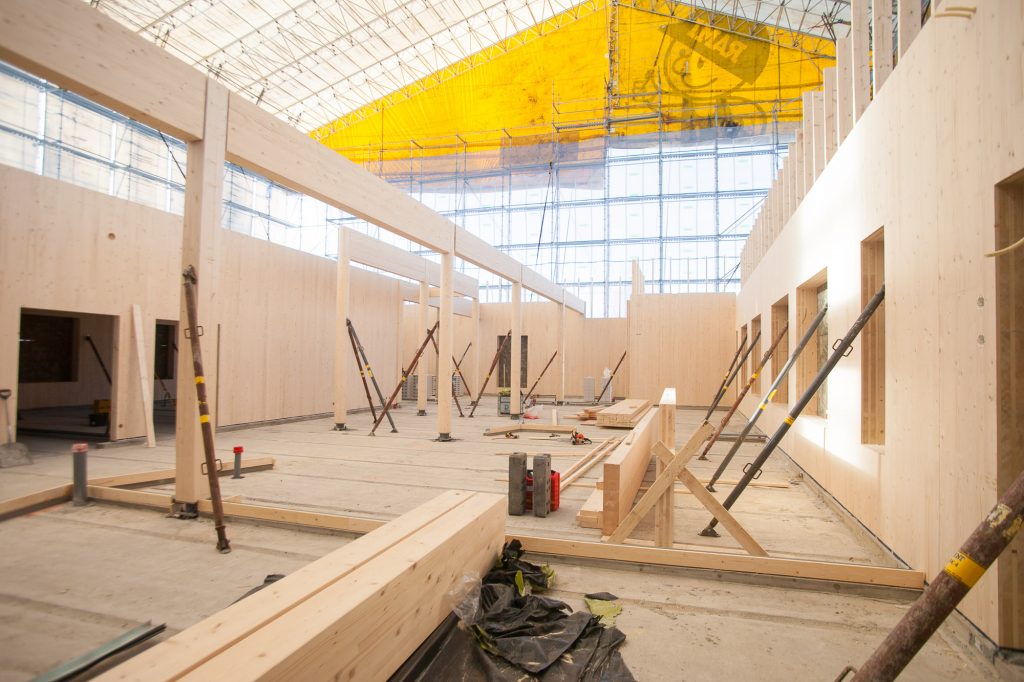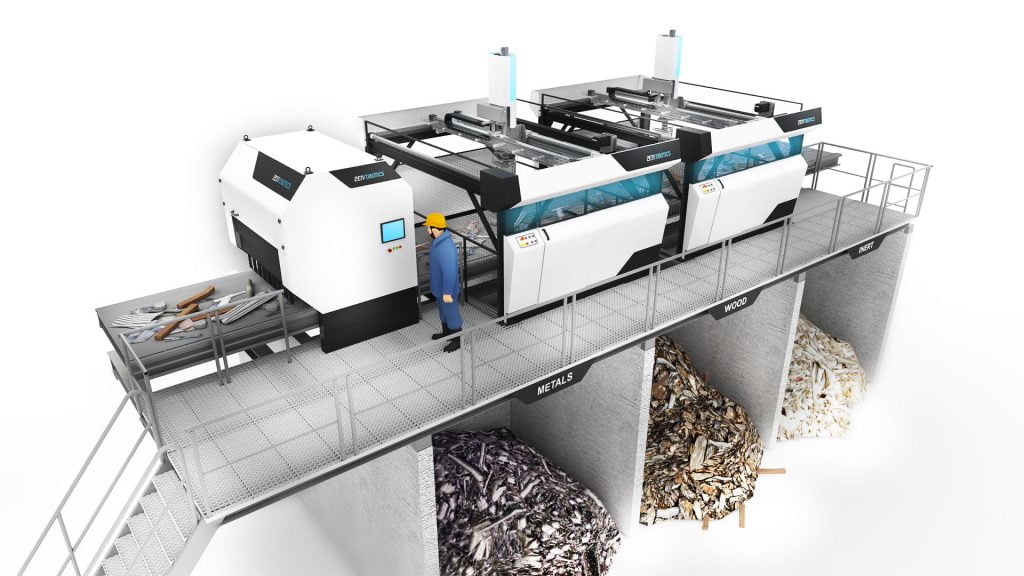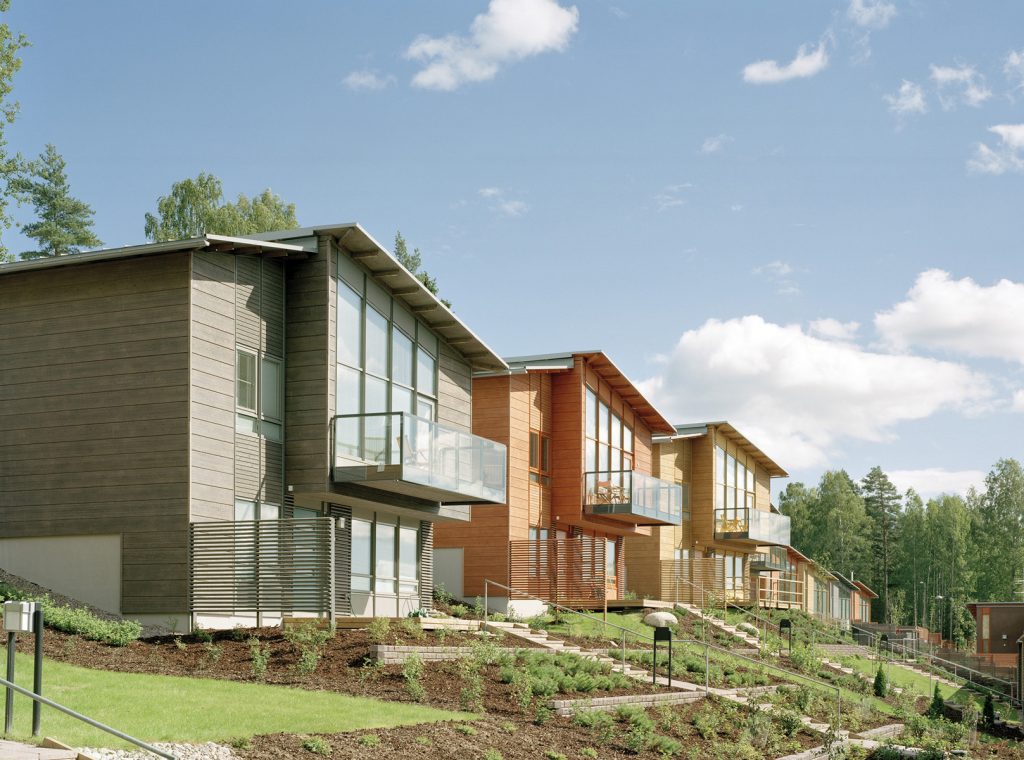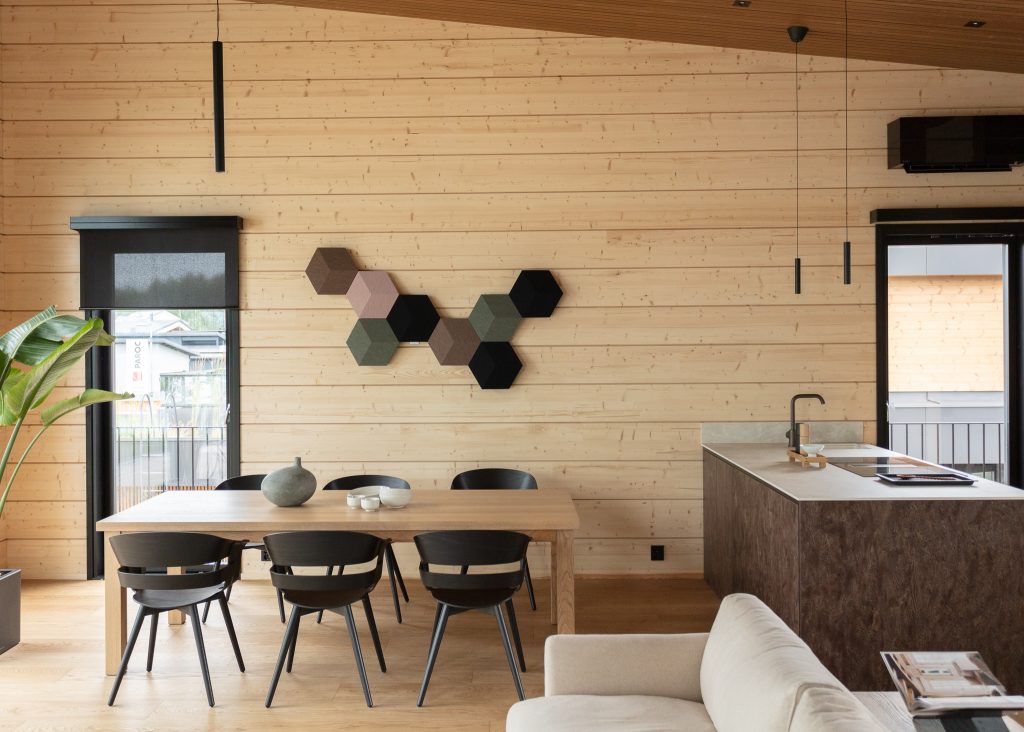WoodCircus targets circular economy solutions for wood construction
Finland is in many ways a pioneer in the wood industry. We have considerable strengths particularly in the fields of material and energy efficiency, but the circular economy of wood construction is still in its infancy here. Wood construction is undergoing significant strategic and operational changes in hopes of tackling climate change, accelerating the green transition, and promoting a circular economy. This is why the industry is seeking solutions in new forms of construction and the improved management and use of by-products in value chains.
Text: Erkki Verkasalo
Photographs: Mikko Auerniitty, Puuinfo, Puurakentajat Group Oy
Read the article in Finnish: WoodCircus-projektissa etsittiin kiertotalousratkaisuja puurakentamiseen

A circular economy is defined as an economic system that aims to keep the economy operating within the limits of its carrying capacity. This approach attempts to keep materials and products in circulation for as long as possible to retain their value and to minimise waste in production and consumption. A circular economy has both biological and technical dimensions, with each pursuing positive economic and environmental impacts.
Part of the European Union’s Horizon 2020 programme, Project WoodCircus (2018-2021) highlighted the potential of the wood and wood construction sectors to serve as engines for sustainable growth and a European circular economy. To this end, the current states and development needs of these sectors were surveyed in our macro-regions – one of these being the Nordic countries. The program looked for best practices for using the wood industry’s by-products and construction, demolition, and packaging waste. It also investigated ways to improve sustainability, to use resources more effectively and to leverage – regionally and nationally – the new opportunities offered by the circular economy.
In particular, there was a desire to find recommended how-tos for transitioning to circular economy-compliant, environmentally-friendly, carbon-neutral production processes, raw materials, products and practices, and to find strategic and operational options for industry and other actors in the value chain. To influence decision-making by public authorities and the business community, the program identified the research, development and investment measures required for advancing the circular economy and also unearthed a need to update outdated regulations, standards and financial instruments.
The project included eight research institutes and nine industry representatives from seven countries. The Finnish contributors were the VTT Technical Research Centre of Finland (coordinator), the Natural Resources Institute Finland, and the Finnish Sawmills Association with partners from several industry and regional development organisations.

Nordic strengths
Although the Nordic countries are in many ways pioneers in the European wood industry and therefore have considerable strengths in the circular economy, particularly in the fields of material and energy efficiency, wood construction is still in its infancy here. Despite this handicap, Finland already has plenty of best practices in the wood circular economy, including:
- industrial synergies: wood industry parks, integration of mechanical wood processing and bioenergy plants, comprehensive use of industrial biomass, and collaboration among spin-off companies industrial manufacture of single family home packages (log, CLT)
- industrial wood construction: CLT-LVLplywood-glulam-hybrid solutions, prefabricated building components and elements (large scale and volumetric elements)
- technologies that increase the service life of wood products: heat and compression treatments, heartwood usage
- relatively energy efficient wooden buildings and heating and cooling systems
- interior decoration product solutions that are emission-free and antibacterial
- recycling systems for pressure-treated wood and wood packaging
- technology solutions for waste sorting (automation and robotics)
- development projects for biochar, biogas and wood ash products and geo-construction (including construction, demolition and packaging waste)

Looking to europe for examples
Existing best practices that could also be applied in Finland include:
- incorporating construction, demolition and packaging waste into a comprehensive waste management solution (Italy, UK)
- reusing and modifying wood product components from construction for new uses (Slovenia, Spain, Germany), and
- using wood and fibre products in renovations (Germany, Austria, Slovenia).
In addition, new insulation and facade products are being developed from industry by-products in parts of Europe.
Finland needs large-scale solutions for processing wood waste. Currently however, the most prominent solutions here in Finland and elsewhere in Europe are so-called added-value products for niche markets. Raw material volumes for these are small.
While there is a significant chipboard and fibreboard industry in continental Europe, in Finland it is quite small. This limits the amount of wood-based by-products and waste for material purposes. However, this has left us room for developing a variety of bioenergy solutions, which are also needed locally elsewhere in Europe. Likewise, our wood panel industry can offer in the spirit of circular economy items such as bio-glued and eco-coated construction and interior decoration products. The cascading principle means that the uses of raw materials are put into an order of value to create resource effectiveness. Legislation and regulations assign different values for various materials and energy uses, and such specific national and regional needs and opportunities are currently not accounted for in legislative cascading targets. This should be changed.
Important development areas
To wield the circular economy potential of wood construction, the service life of materials and products needs to improve. This can be accomplished by improving their recyclability and adaptability to new uses. Housing and other everyday applications in particular underline the need for sustainability, environmentally-friendly product design and improved product functionality. Rather than dwelling on the physical features of products, marketing and branding should highlight the functional benefits and the health and safety effects, including how the products can improve people’s well-being.

Total productivity, added value, and by-product logistics are important not only in construction value chains but also in the daily operations of companies. The service life of buildings and products are key issues here, as are their carbon contents. Both the carbon footprint and the carbon handprint must be taken into account in construction, and the focus needs to shift from emissions to the climate benefits of the entire lifecycle and reuse of materials.
We really need lifecycle analyses and environmental product declarations for the prefabrication of construction products and the approval of recycled products. New uses that add value are needed in particular for construction, demolition, and packaging waste, even if wide-scale adoption is still hampered by logistical constraints and the relatively small volumes of waste. More efficient waste sorting, better quality recycled products and perhaps even a marketplace would facilitate better use of this waste. In addition, regulations and rules should be updated to enable the reuse and modification of building components in particular. European Union strategies and national legislation concentrate on minimising the use of raw materials, and on salvaging and reuse. Recycling is only secondary.
Research, development and investment have resulted in a wealth of useful product and service concepts for wood construction in a circular economy. The bottlenecks lie in the commercialisation, proof-of-concept development, corporate and investment risk management, and financing opportunities. These are the areas that need to be addressed to convince investors and companies that the new business is worthwhile.
CREDITS

The author of this article, Erkki Verkasalo, works as a research professor in wood science and technology at the Natural Resources Institute Finland.
For all the available publications and other materials from the WoodCircus project, visit woodcircus.eu.
